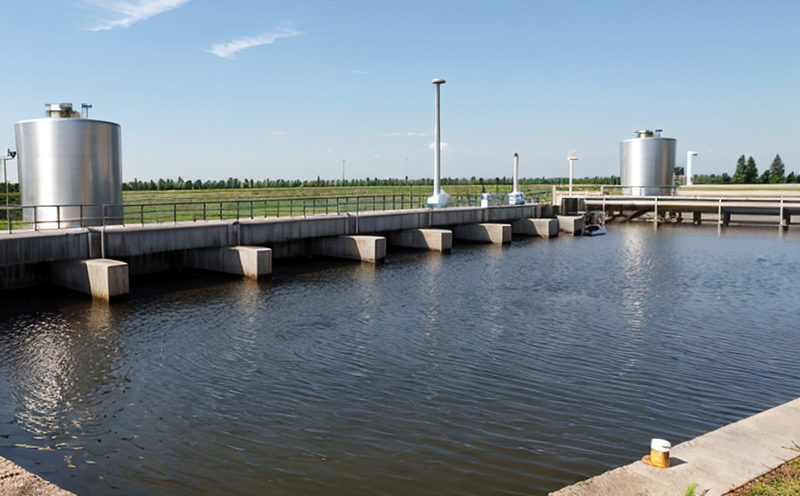ASTM D5465 Bacteria Enumeration in Water Samples
The ASTM D5465 standard provides a robust method for enumerating bacteria in water samples through the use of membrane filtration and subsequent plating techniques. This service is crucial for ensuring that water supplies meet stringent quality standards set by regulatory bodies, such as the World Health Organization (WHO) and the United States Environmental Protection Agency (EPA).
The process begins with the collection of water samples from various sources. These samples are then carefully prepared according to ASTM D5465 guidelines to ensure accurate enumeration. The filtration step is critical; it involves passing the sample through a membrane filter, which retains viable bacteria. After filtering, the membrane is transferred onto an appropriate agar medium suitable for bacterial growth.
The colonies that develop on the agar plates are then counted using visual inspection or automated colony counters. This enumeration process allows laboratories to assess the presence and concentration of bacteria in water samples accurately. The methodology ensures consistency across multiple samples and provides reliable results, which is essential for maintaining public health standards.
ASTM D5465 is widely recognized as a standard practice in the industry due to its detailed procedures and reproducibility. Compliance with this method guarantees that laboratories adhere to internationally accepted protocols, thereby enhancing the credibility of their findings.
The significance of ASTM D5465 extends beyond mere compliance; it plays a pivotal role in safeguarding public health by ensuring that water supplies are free from harmful microorganisms. This service is particularly relevant for industries such as municipal water treatment facilities, food and beverage manufacturers, and pharmaceutical companies, where purity and safety standards are non-negotiable.
By utilizing ASTM D5465, laboratories can provide data-driven insights into the microbial quality of water samples. These insights are invaluable for making informed decisions about water treatment processes, ensuring product safety, and maintaining regulatory compliance.
Why It Matters
The enumeration of bacteria in water samples through ASTM D5465 is critical for several reasons. Firstly, it helps in identifying potential health hazards associated with contaminated water sources. Secondly, it supports the implementation of effective treatment strategies to mitigate these risks. Additionally, this service ensures that regulatory standards are met, thereby protecting public health and environmental sustainability.
The presence of bacteria in drinking water can lead to serious health issues such as gastrointestinal illnesses, urinary tract infections, and other diseases if not controlled adequately. Therefore, accurate enumeration is paramount for the prevention of these health risks. Moreover, ensuring compliance with regulatory standards helps maintain trust between suppliers and consumers, fostering a safer environment.
ASTM D5465 also plays an essential role in supporting research and development efforts aimed at improving water treatment technologies. By providing precise data on bacterial counts, laboratories can contribute valuable information to the scientific community, driving innovation and continuous improvement in water quality management practices.
Scope and Methodology
The scope of ASTM D5465 encompasses the enumeration of bacteria present in various types of water samples. This includes potable water, surface water, and wastewater. The method is designed to be adaptable, allowing laboratories to tailor their approach based on sample characteristics and specific requirements.
The methodology involves several key steps: sampling, preparation, filtration, plating, incubation, and enumeration. Each step is meticulously documented to ensure accurate results. Sampling should be conducted according to best practices to avoid contamination and ensure representative samples are collected.
- Sampling: Collection of water from specified sources using appropriate containers.
- Preparation: Adjustment of pH levels, addition of preservatives if necessary, and other preparatory measures as outlined in ASTM D5465.
- Filtration: Passing the sample through a membrane filter to retain viable bacteria.
- Plating: Transferring the filtered sample onto agar medium for growth.
- Incubation: Incubating plates under optimal conditions conducive to bacterial growth.
- Enumeration: Counting the colonies formed on the agar plates using visual inspection or automated colony counters.
The standard specifies the use of specific types of agar media and incubation temperatures, ensuring consistent results across different laboratories. Compliance with these guidelines is essential for accurate enumeration and reliable data.
Industry Applications
- Municipal Water Treatment Facilities: Ensuring safe drinking water by identifying bacterial contamination early in the treatment process.
- Food and Beverage Industry: Guaranteeing product safety by monitoring bacterial levels in production water.
- Packaging and Processing Industries: Maintaining hygiene standards throughout the manufacturing process.
- Pharmaceutical Manufacturing: Ensuring sterility of raw materials and final products.
- Agricultural Irrigation: Monitoring bacterial presence in irrigation water to prevent crop contamination.
- Environmental Monitoring: Assessing the impact of wastewater discharge on natural ecosystems.
The ASTM D5465 service is applicable across various sectors, underscoring its versatility and importance in ensuring microbial safety and compliance with international standards.





